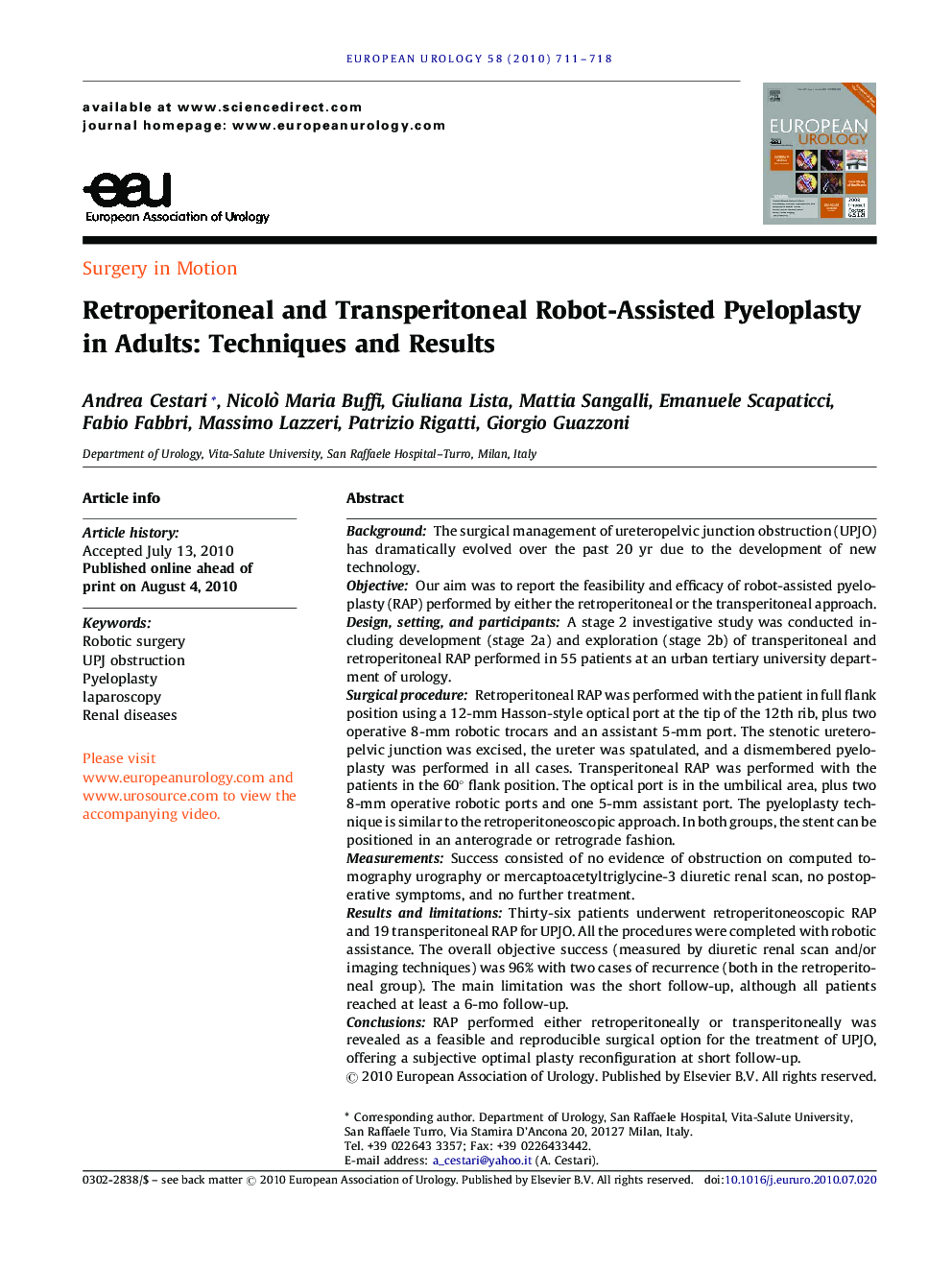| Article ID | Journal | Published Year | Pages | File Type |
|---|---|---|---|---|
| 3926246 | European Urology | 2010 | 8 Pages |
BackgroundThe surgical management of ureteropelvic junction obstruction (UPJO) has dramatically evolved over the past 20 yr due to the development of new technology.ObjectiveOur aim was to report the feasibility and efficacy of robot-assisted pyeloplasty (RAP) performed by either the retroperitoneal or the transperitoneal approach.Design, setting, and participantsA stage 2 investigative study was conducted including development (stage 2a) and exploration (stage 2b) of transperitoneal and retroperitoneal RAP performed in 55 patients at an urban tertiary university department of urology.Surgical procedureRetroperitoneal RAP was performed with the patient in full flank position using a 12-mm Hasson-style optical port at the tip of the 12th rib, plus two operative 8-mm robotic trocars and an assistant 5-mm port. The stenotic ureteropelvic junction was excised, the ureter was spatulated, and a dismembered pyeloplasty was performed in all cases. Transperitoneal RAP was performed with the patients in the 60° flank position. The optical port is in the umbilical area, plus two 8-mm operative robotic ports and one 5-mm assistant port. The pyeloplasty technique is similar to the retroperitoneoscopic approach. In both groups, the stent can be positioned in an anterograde or retrograde fashion.MeasurementsSuccess consisted of no evidence of obstruction on computed tomography urography or mercaptoacetyltriglycine-3 diuretic renal scan, no postoperative symptoms, and no further treatment.Results and limitationsThirty-six patients underwent retroperitoneoscopic RAP and 19 transperitoneal RAP for UPJO. All the procedures were completed with robotic assistance. The overall objective success (measured by diuretic renal scan and/or imaging techniques) was 96% with two cases of recurrence (both in the retroperitoneal group). The main limitation was the short follow-up, although all patients reached at least a 6-mo follow-up.ConclusionsRAP performed either retroperitoneally or transperitoneally was revealed as a feasible and reproducible surgical option for the treatment of UPJO, offering a subjective optimal plasty reconfiguration at short follow-up.
